Mapping Sustainable Diets: A Comparison of Sustainability References in Dietary Guidelines of Swiss Food Governance Actors
Abstract
:1. Introduction
2. Background: Dietary Guidelines in a Changing Food Governance Landscape
3. Materials and Methods
3.1. Selection of Stakeholders and Dietary Guidelines
3.2. Measuring Sustainability in Dietary Guidelines
| Category | 1. Environment | 2. Social | 3. Economics | 4. Health | 5. Governance |
|---|---|---|---|---|---|
| Definition | Denotes living within the carrying capacity of supporting ecosystems while meeting human needs [50]. | Driving forward social progress for all with socio-economic conditions that are fair and affordable; nutritionally adequate, safe, culturally acceptable, and accessible while empowering animal welfare and gender equality [4]. | Practice that reinforces social and environmental objectives considered in relation to trade, industry, and the creation of wealth [4]. | Comprises the essential food groups for growth and good health as well as being of complete physical, mental, and social well-being [4] | Denotes the totality of instruments and mechanisms available to steer a society collectively [51]. |
| Code | 1.1 Climate Change | 2.1 Community | 3.1 Affordability | 4.1 Well-being | 5.1 Certifications and Standards |
| 1.2 Biodiversity | 2.2 Culture | 3.2 Cost | 4.2 Fruits and Vegetables | 5.2 Transparency | |
| 1.3 Land use | 2.3 Pleasure | 3.3 Labor Rights | 4.3 Animal-based Protein | 5.3 Regulation | |
| 1.4 Water use | 2.4 Animal Welfare | 3.4 Sustainable Production Patterns | 4.4 Plant-based Protein | 5.4 Food Security | |
| 1.5 Soil | 2.5 Ethical Buying | 3.5 Technology and Innovation | 4.5 Tubers or Starchy Vegetables | 5.5 Justice | |
| 1.6 Animal Agriculture | 2.6 Gender Equality | 4.6 Whole Grains | 5.6 Education | ||
| 1.7 Origin | 4.7 Liquid (Unsweetened Drinks) | 5.7 Directives | |||
| 1.8 Food Waste | 4.8 Sweets, Salty, Snacks and Alcoholic Drinks | 5.8 Science | |||
| 1.9 Energy use | 4.9 Dairy Products | ||||
| 1.10. Aquatic Ecosystem |
| Scale | Definition |
|---|---|
| 0 = not mentioned | Absence of the code. |
| 1 = briefly mentioned | The code is only vaguely mentioned in the text, with only a word or short phrase referring to the feature. |
| 2 = well expressed | The statement consists of a clear clarification of the code that is explained or elaborated within the excerpt and is substantiated with figures, graphs, facts or details. |
4. Results
4.1. Overview of the Sustainability Profiles of Dietary Guidelines
4.2. Similarities and Differences of Sustainability References in the Dietary Guidelines
5. Discussion
6. Conclusions
Author Contributions
Funding
Institutional Review Board Statement
Informed Consent Statement
Data Availability Statement
Conflicts of Interest
Appendix A
| Categories/Codes | EAT | Swiss Government | Nestlé | SV Group Switzerland | WWF Schweiz | Total | ||||||||||||
|---|---|---|---|---|---|---|---|---|---|---|---|---|---|---|---|---|---|---|
| Count | Sum | Percent | Count | Sum | Percent | Count | Sum | Percent | Count | Sum | Percentage | Count | Sum | Percentage | Count | Sum | Percentage | |
| Economics | 20 | 23 | 5.3% | 7 | 10 | 3.8% | 84 | 119 | 19.6% | 23 | 27 | 10.0% | 34 | 39 | 5.9% | 168 | 218 | 9.7% |
| Affordability | 1 | 1 | 4.3% | 3 | 3 | 30.0% | 0 | 0 | 0.0% | 1 | 1 | 3.7% | 1 | 1 | 2.6% | 6 | 6 | 2.8% |
| Cost | 0 | 0 | 0.0% | 2 | 5 | 50.0% | 5 | 6 | 5.0% | 4 | 4 | 14.8% | 2 | 2 | 5.1% | 13 | 17 | 7.80% |
| Labor Rights | 0 | 0 | 0.0% | 0 | 0 | 0.0% | 3 | 3 | 2.5% | 3 | 4 | 14.8% | 1 | 1 | 2.6% | 7 | 8 | 3.7% |
| Sustainable Production Patterns | 11 | 13 | 56.5% | 0 | 0 | 0.0% | 43 | 62 | 52.1% | 8 | 9 | 33.3% | 26 | 30 | 76.9% | 88 | 114 | 52.3% |
| Technology and Innovation | 8 | 9 | 39.1% | 2 | 2 | 20.0% | 33 | 48 | 40.3% | 7 | 9 | 33.3% | 4 | 5 | 12.8% | 54 | 73 | 33.5% |
| Environment | 98 | 141 | 32.3% | 2 | 3 | 1.1% | 241 | 330 | 54.5% | 60 | 85 | 31.5% | 239 | 340 | 51.3% | 640 | 899 | 40.1% |
| Animal Agriculture | 6 | 8 | 5.7% | 0 | 0 | 0.0% | 16 | 19 | 5.8% | 3 | 4 | 4.7% | 23 | 32 | 9.4% | 48 | 63 | 7.0% |
| Aquatic Ecosystem | 3 | 3 | 2.1% | 0 | 0 | 0.0% | 3 | 4 | 1.2% | 4 | 7 | 8.2% | 16 | 23 | 6.8% | 26 | 37 | 4.1% |
| Biodiversity | 12 | 16 | 11.3% | 0 | 0 | 0.0% | 8 | 8 | 2.4% | 2 | 3 | 3.5% | 33 | 44 | 12.9% | 55 | 71 | 7.9% |
| Climate Change | 31 | 51 | 36.2% | 0 | 0 | 0.0% | 80 | 108 | 32.7% | 12 | 17 | 20.0% | 46 | 64 | 18.8% | 169 | 240 | 26.7% |
| Food Waste | 15 | 19 | 13.5% | 1 | 1 | 33.3% | 3 | 4 | 1.2% | 3 | 4 | 4.7% | 17 | 19 | 5.6% | 39 | 47 | 5.2% |
| Land Use | 12 | 17 | 12.1% | 0 | 0 | 0.0% | 35 | 52 | 15.8% | 3 | 4 | 4.7% | 47 | 75 | 22.1% | 97 | 148 | 16.5% |
| Origin | 2 | 2 | 1.4% | 2 | 2 | 66.7% | 38 | 54 | 16.4% | 25 | 34 | 40.0% | 9 | 14 | 4.1% | 76 | 106 | 11.8% |
| Renewable Energy | 1 | 1 | 0.7% | 0 | 0 | 0.0% | 37 | 49 | 14.8% | 5 | 8 | 9.4% | 5 | 7 | 2.1% | 48 | 65 | 7.2% |
| Soil | 10 | 16 | 11.3% | 0 | 0 | 0.0% | 14 | 22 | 6.7% | 3 | 4 | 4.7% | 31 | 43 | 12.6% | 58 | 85 | 9.5% |
| Water Use | 6 | 8 | 5.7% | 0 | 0 | 0.0% | 7 | 10 | 3.0% | 0 | 0 | 0.0% | 12 | 19 | 5.6% | 25 | 37 | 4.1% |
| Governance | 93 | 125 | 28.6% | 58 | 72 | 27.3% | 79 | 103 | 17.0% | 48 | 66 | 24.4% | 113 | 156 | 23.5% | 391 | 522 | 23.3% |
| Certifications and Standards | 0 | 0 | 0.0% | 1 | 1 | 1.4% | 20 | 29 | 28.2% | 18 | 25 | 37.9% | 2 | 3 | 1.9% | 41 | 58 | 11.1% |
| Directives | 36 | 51 | 40.8% | 12 | 18 | 25.0% | 3 | 4 | 3.9% | 12 | 14 | 21.2% | 34 | 54 | 34.6% | 97 | 141 | 27.0% |
| Education | 3 | 5 | 4.0% | 15 | 18 | 25.0% | 8 | 12 | 11.7% | 6 | 9 | 13.6% | 3 | 3 | 1.9% | 35 | 47 | 9.0% |
| Food Security | 21 | 25 | 20.0% | 2 | 3 | 4.2% | 1 | 1 | 1.0% | 0 | 0 | 0.0% | 24 | 30 | 19.2% | 48 | 59 | 11.3% |
| Justice | 6 | 10 | 8.0% | 1 | 1 | 1.4% | 3 | 3 | 2.9% | 2 | 4 | 6.1% | 11 | 17 | 10.9% | 23 | 35 | 6.7% |
| Regulation | 6 | 7 | 5.6% | 14 | 16 | 22.2% | 13 | 15 | 14.6% | 1 | 2 | 3.0% | 14 | 17 | 10.9% | 48 | 57 | 10.9% |
| Science | 21 | 27 | 21.6% | 13 | 15 | 20.8% | 9 | 13 | 12.6% | 4 | 4 | 6.1% | 25 | 32 | 20.5% | 72 | 91 | 17.4% |
| Transparency | 0 | 0 | 0.0% | 0 | 0 | 0.0% | 22 | 26 | 25.2% | 5 | 8 | 12.1% | 0 | 0 | 0.0% | 27 | 34 | 6.5% |
| Health | 100 | 139 | 31.8% | 127 | 164 | 62.1% | 24 | 37 | 6.1% | 37 | 48 | 17.8% | 86 | 116 | 17.5% | 374 | 504 | 22.5% |
| Animal-based Protein | 20 | 25 | 18.0% | 12 | 15 | 9.1% | 1 | 2 | 5.4% | 11 | 14 | 29.2% | 24 | 33 | 28.4% | 68 | 89 | 17.7% |
| Dairy Products | 12 | 18 | 12.9% | 15 | 20 | 12.2% | 12 | 18 | 48.6% | 7 | 8 | 16.7% | 16 | 22 | 19.0% | 62 | 86 | 17.1% |
| Fruits and Vegetables | 15 | 22 | 15.8% | 17 | 21 | 12.8% | 2 | 3 | 8.1% | 10 | 14 | 29.2% | 9 | 12 | 10.3% | 53 | 72 | 14.3% |
| Liquids (Unsweetened Drinks) | 2 | 3 | 2.2% | 8 | 12 | 7.3% | 1 | 2 | 5.4% | 2 | 2 | 4.2% | 1 | 2 | 1.7% | 14 | 21 | 4.2% |
| Plant-based Protein | 11 | 16 | 11.5% | 16 | 24 | 14.6% | 1 | 2 | 5.4% | 3 | 5 | 10.4% | 7 | 10 | 8.6% | 38 | 57 | 11.3% |
| Sweets, Salty Snacks and Alcoholic Drinks | 11 | 13 | 9.4% | 19 | 22 | 13.4% | 2 | 4 | 10.8% | 1 | 1 | 2.1% | 2 | 2 | 1.7% | 35 | 42 | 8.3% |
| Tubers or starchy vegetables | 5 | 8 | 5.8% | 5 | 8 | 4.9% | 1 | 2 | 5.4% | 1 | 2 | 4.2% | 0 | 0 | 0.0% | 12 | 20 | 4.0% |
| Well-being | 16 | 23 | 16.5% | 24 | 29 | 17.7% | 3 | 3 | 8.1% | 2 | 2 | 4.2% | 24 | 30 | 25.9% | 69 | 87 | 17.3% |
| Whole grains | 8 | 11 | 7.9% | 11 | 13 | 7.9% | 1 | 1 | 2.7% | 0 | 0 | 0.0% | 3 | 5 | 4.3% | 23 | 30 | 6.0% |
| Social | 7 | 9 | 2.1% | 12 | 15 | 5.7% | 14 | 17 | 2.8% | 32 | 44 | 16.3% | 10 | 12 | 1.8% | 75 | 97 | 4.3% |
| Animal Welfare | 1 | 1 | 11.1% | 1 | 1 | 6.7% | 2 | 2 | 11.8% | 14 | 21 | 47.7% | 3 | 4 | 33.3% | 21 | 29 | 29.9% |
| Community | 0 | 0 | 0.0% | 2 | 2 | 13.3% | 5 | 4 | 23.5% | 5 | 6 | 13.6% | 0 | 0 | 0.0% | 12 | 12 | 12.4% |
| Culture | 6 | 8 | 88.9% | 0 | 0 | 0.0% | 0 | 0 | 0.0% | 1 | 1 | 2.3% | 6 | 7 | 58.3% | 13 | 16 | 16.5% |
| Ethical Buying | 0 | 0 | 0.0% | 1 | 1 | 6.7% | 1 | 2 | 11.8% | 3 | 5 | 11.4% | 1 | 1 | 8.3% | 6 | 9 | 9.3% |
| Gender Equality | 0 | 0 | 0.0% | 0 | 0 | 0.0% | 4 | 7 | 41.2% | 1 | 2 | 4.5% | 0 | 0 | 0.0% | 5 | 9 | 9.3% |
| Pleasure | 0 | 0 | 0.0% | 8 | 11 | 73.3% | 2 | 2 | 11.8% | 8 | 9 | 20.5% | 0 | 0 | 0.0% | 18 | 22 | 22.7% |
Appendix B
| Excerpt | Category/Applied Code | Code Definition | Scaling | Justification |
|---|---|---|---|---|
| “In this section we use these results to draw insights on the global implications of current food consumption patterns in G20 countries and how the 5 Gt CO2eq food budget may need to be more equitably distributed to achieve healthy diets for all.” | Environment/Climate Change | Global warming, GHG emissions, Carbon Storage Ecological Footprint, Carbon Budget, Temperature, Precipitation | 1 | based on the following text passage: “… 5 Gt CO2eq food budget …” Carbon Budget. A single word or short phrase that refers to the feature and is not further explained or elaborated within the excerpt. |
| Governance/Justice | Democratic Values, Intergenerational Justice, Food Distribution, Fair Economic Conditions, Equal Opportunities | 1 | based on the following text passage: “...equitably distributed to achieve healthy diets for all.” Equal Opportunities and Food Distribution. A single word or short phrase that refers to the feature and is not further explained or elaborated within the excerpt. | |
| “Mealtimes are not just about the intake of energy and nutrients; they are also about pleasure, relaxation and social contact. Taking time, switching off and eating and drinking in peace and quiet help to promote the enjoyment of eating.” | Social/Community | Alone/Together, Sharing, Eating Modes, Farming/Local Communities Support, Team Spirit, Cohesion Exchange | 1 | based on the following text passage: “... social contact.” Social Contact elaborates on togetherness and eating modes. A single word or short phrase that refers to the feature and is not further explained or elaborated within the excerpt. |
| Social/Pleasure | Taste, Aesthetics, Mindful Eating, Time, Comfort, Cordiality, Enjoyment of Eating | 2 | based on the following text passage: “...pleasure, relaxation and social contact. Taking time, switching off and eating and drinking in peace and quiet help to promote the enjoyment of eating.” Within the excerpt, the statement is substantiated. Rationale for the significance of the characteristic is elaborated and the excerpt refers to concrete actions. |
References
- Rockström, J.; Steffen, W.; Noone, K.; Persson, Å.; Chapin, F.S.; Lambin, E.F.; Lenton, T.M.; Scheffer, M.; Folke, C.; Schellnhuber, H.J.; et al. A Safe Operating Space for Humanity. Nature 2009, 461, 472–475. [Google Scholar] [CrossRef] [PubMed]
- Steffen, W.; Richardson, K.; Rockstrom, J.; Cornell, S.E.; Fetzer, I.; Bennett, E.M.; Biggs, R.; Carpenter, S.R.; de Vries, W.; de Wit, C.A.; et al. Planetary Boundaries: Guiding Human Development on a Changing Planet. Science 2015, 347, 1259855. [Google Scholar] [CrossRef] [PubMed] [Green Version]
- Nutrition and Food Systems. A Report by the High Level Panel of Experts on Food Security and Nutrition of the Committee on World Food Security; HLPE: Rome, Italy, 2017. [Google Scholar]
- Transforming Food Systems for Affordable Healthy Diets; FAO: Rome, Italy, 2020.
- Campbell, B.M.; Beare, D.J.; Bennett, E.M.; Hall-Spencer, J.M.; Ingram, J.S.I.; Jaramillo, F.; Ortiz, R.; Ramankutty, N.; Sayer, J.A.; Shindell, D. Agriculture Production as a Major Driver of the Earth System Exceeding Planetary Boundaries. E&S 2017, 22, art8. [Google Scholar] [CrossRef]
- Mason, P.; Lang, T. Sustainable Diets: How Ecological Nutrition Can Transform Consumption and the Food System; Routledge: London, UK, 2017; ISBN 978-0-415-74470-6. [Google Scholar]
- Béné, C.; Oosterveer, P.; Lamotte, L.; Brouwer, I.D.; de Haan, S.; Prager, S.D.; Talsma, E.F.; Khoury, C.K. When Food Systems Meet Sustainability – Current Narratives and Implications for Actions. World Dev. 2019, 113, 116–130. [Google Scholar] [CrossRef]
- Tobi, R.C.A.; Harris, F.; Rana, R.; Brown, K.A.; Quaife, M.; Green, R. Sustainable Diet Dimensions. Comparing Consumer Preference for Nutrition, Environmental and Social Responsibility Food Labelling: A Systematic Review. Sustainability 2019, 11, 6575. [Google Scholar] [CrossRef] [Green Version]
- Ingram, J. A Food Systems Approach to Researching Food Security and Its Interactions with Global Environmental Change. Food Sec. 2011, 3, 417–431. [Google Scholar] [CrossRef]
- Ingram, J.S.I.; Ericksen, P.; Liverman, D.M. Food Security and Global Environmental Change; Earthscan: London, UK; Washington, DC, USA, 2010; ISBN 978-1-84971-127-2. [Google Scholar]
- Verbruggen, P.; Havinga, T. (Eds.) Hybridization of Food Governance: Trends, Types and Results; Edward Elgar Publishing: Cheltenham, UK, 2017; ISBN 978-1-78536-169-2. [Google Scholar]
- Schilpzand, R.; Liverman, D.; Tecklin, D.; Gordon, R.; Pereira, L.; Saxl, M.; Wiebe, K. Governance beyond the State: Non-State Actors and Food Systems. In Food Security and Global Environmental Change; Earthscan: London, UK; Washington, DC, USA, 2010; pp. 272–300. ISBN 978-1-84971-127-2. [Google Scholar]
- Messerli, P.; Murniningtyas, E.; Eloundou-Enyegue, P.; Foli, E.G.; Furman, E.; Glassman, A.; Hernández Licona, G.; Kim, E.M.; Lutz, W.; Moatti, J.P.; et al. Sustainable Development Report 2019: The Future Is Now – Science for Achieving Sustainable Development; United Nations: New York, NY, USA, 2019. [Google Scholar]
- The Planetary Health Diet. Available online: https://eatforum.org/learn-and-discover/the-planetary-health-diet/ (accessed on 10 September 2020).
- Lang, T.; Barling, D. Nutrition and Sustainability: An Emerging Food Policy Discourse. Proc. Nutr. Soc. 2013, 72, 1–12. [Google Scholar] [CrossRef] [Green Version]
- Willett, W.; Rockström, J.; Loken, B.; Springmann, M.; Lang, T.; Vermeulen, S.; Garnett, T.; Tilman, D.; DeClerck, F.; Wood, A.; et al. Food in the Anthropocene: The EAT–Lancet Commission on Healthy Diets from Sustainable Food Systems. Lancet 2019, 393, 447–492. [Google Scholar] [CrossRef]
- Climate Change 2014: Mitigation of Climate Change; Working Group III Contribution to the Fifth Assessment Report of the Intergovernmental Panel on Climate Change; Climate change 2014; Cambridge University Press: New York, NY, USA, 2014; ISBN 978-1-107-65481-5.
- Lang, T.; Mason, P. Sustainable Diet Policy Development: Implications of Multi-Criteria and Other Approaches, 2008–2017. Proc. Nutr. Soc. 2018, 77, 331–346. [Google Scholar] [CrossRef]
- Santaoja, M.; Jauho, M. Institutional Ambiguity and Ontological Politics in Integrating Sustainability into Finnish Dietary Guidelines. Sustainability 2020, 12, 5330. [Google Scholar] [CrossRef]
- Burlingame, B. Sustainable Diets and Biodiversity - Directions and Solutions for Policy Research and Action Proceedings of the International Scientific Symposium Biodiversity and Sustainable Diets United Against Hunger; FAO: Rome, Italy, 2012; ISBN 978-92-5-107288-2. [Google Scholar]
- Béné, C.; Fanzo, J.; Prager, S.D.; Achicanoy, H.A.; Mapes, B.R.; Alvarez Toro, P.; Bonilla Cedrez, C. Global Drivers of Food System (Un)Sustainability: A Multi-Country Correlation Analysis. PLoS ONE 2020, 15, e0231071. [Google Scholar] [CrossRef] [Green Version]
- Mertens, E.; van’t Veer, P.; Hiddink, G.J.; Steijns, J.M.; Kuijsten, A. Operationalising the Health Aspects of Sustainable Diets: A Review. Public Health Nutr. 2017, 20, 739–757. [Google Scholar] [CrossRef] [Green Version]
- Burlingame, B.; Dernini, S. Sustainable Diets and Biodiversity: Directions and Solutions for Policy, Research and Action; FAO: Rome, Italy, 2012; ISBN 978-92-5-107288-2. [Google Scholar]
- Díaz-Méndez, C.; Lozano-Cabedo, C. Food Governance and Healthy Diet an Analysis of the Conflicting Relationships among the Actors of the Agri-Food System. Trends Food Sci. Technol. 2020, 105, 449–453. [Google Scholar] [CrossRef]
- Preparation and Use of Food-Based Dietary Guidelines: Report of a Joint FAO/WHO Consultation; WHO Technical Report Series; WHO: Geneva, Switzerland, 1998; ISBN 978-92-4-120880-2.
- Wijesinha-Bettoni, R.; Khosravi, A.; Ramos, A.I.; Sherman, J.; Hernandez-Garbanzo, Y.; Molina, V.; Vargas, M.; Hachem, F. A Snapshot of Food-Based Dietary Guidelines Implementation in Selected Countries. Glob. Food Secur. 2021, 29, 100533. [Google Scholar] [CrossRef]
- Springmann, M.; Spajic, L.; Clark, M.A.; Poore, J.; Herforth, A.; Webb, P.; Rayner, M.; Scarborough, P. The Healthiness and Sustainability of National and Global Food Based Dietary Guidelines: Modelling Study. BMJ 2020, m2322. [Google Scholar] [CrossRef]
- Fischer, C.G.; Garnett, T. Plates, Pyramids, and Planets: Developments in National Healthy and Sustainable Dietary Guidelines: A State of Play Assessment; FAO: Rome, Italy, 2016. [Google Scholar]
- Willett, W.C.; Hu, F.B.; Rimm, E.B.; Stampfer, M.J. Building Better Guidelines for Healthy and Sustainable Diets. Am. J. Clin. Nutr. 2021, 114, 401–404. [Google Scholar] [CrossRef] [PubMed]
- Suggs, L.S.; Della Bella, S.; Marques-Vidal, P. Low Adherence of Swiss Children to National Dietary Guidelines. Prev. Med. Rep. 2016, 3, 244–249. [Google Scholar] [CrossRef] [Green Version]
- de Abreu, D.; Guessous, I.; Gaspoz, J.-M.; Marques-Vidal, P. Compliance with the Swiss Society for Nutrition’s Dietary Recommendations in the Population of Geneva, Switzerland: A 10-Year Trend Study (1999–2009). J. Acad. Nutr. Diet. 2014, 114, 774–780. [Google Scholar] [CrossRef]
- de Abreu, D.; Guessous, I.; Vaucher, J.; Preisig, M.; Waeber, G.; Vollenweider, P.; Marques-Vidal, P. Low Compliance with Dietary Recommendations for Food Intake among Adults. Clin. Nutr. 2013, 32, 783–788. [Google Scholar] [CrossRef] [PubMed]
- Graça, J.; Cardoso, S.G.; Augusto, F.R.; Nunes, N.C. Green Light for Climate-Friendly Food Transitions? Communicating Legal Innovation Increases Consumer Support for Meat Curtailment Policies. Environ. Commun. 2020, 14, 1047–1060. [Google Scholar] [CrossRef]
- Havinga, T.; van Waarden, F.; Casey, D. (Eds.) The Changing Landscape of Food Governance: Public and Private Encounters; Edward Elgar Publishing: Cheltenham, UK, 2015; ISBN 978-1-78471-540-3. [Google Scholar]
- Nestle, M.; Pollan, M. Food Politics: How the Food Industry Influences Nutrition and Health; University of California Press: Berkeley, CA, USA, 2013; ISBN 978-0-520-27596-6. [Google Scholar]
- Clapp, J.; Fuchs, D.A. (Eds.) Corporate Power in Global Agrifood Governance; MIT Press: Cambridge, MA, USA, 2009; ISBN 978-0-262-01275-1. [Google Scholar]
- Fuchs, D.; Kalfagianni, A. The Causes and Consequences of Private Food Governance. Bus. Polit. 2010, 12, 1–34. [Google Scholar] [CrossRef]
- Confideration, S. Switzerland Implements the 2030 Agenda for Sustainable Development Switzerland’s Country Report 2018; Federal Department of Foreign Affairs FDFA: Bern, Switzerland, 2018.
- 2030 Sustainable Development Strategy. Available online: https://www.eda.admin.ch/agenda2030/en/home/strategie/strategie-nachhaltige-entwicklung.html (accessed on 10 May 2021).
- Drisko, J.W.; Maschi, T. Content Analysis; Oxford University Press: New York, NY, USA, 2016; ISBN 978-0-19-021549-1. [Google Scholar]
- Béné, C.; Prager, S.D.; Achicanoy, H.A.E.; Toro, P.A.; Lamotte, L.; Bonilla, C.; Mapes, B.R. Global Map and Indicators of Food System Sustainability. Sci Data 2019, 6, 279. [Google Scholar] [CrossRef] [PubMed] [Green Version]
- Scott, P. Global Panel on Agriculture and Food Systems for Nutrition: Food Systems and Diets: Facing the Challenges of the 21st Century. Food Sec. 2017, 9, 653–654. [Google Scholar] [CrossRef]
- Ericksen, P.J. Conceptualizing Food Systems for Global Environmental Change Research. Glob. Environ. Chang. 2008, 18, 234–245. [Google Scholar] [CrossRef]
- World Commission on Environment and Development (WCED) Report of the World Commission on Environment and Development: Our Common Future; United Nations: Oxford, UK, 1987.
- Bengtsson, M. How to Plan and Perform a Qualitative Study Using Content Analysis. Nurs. Open 2016, 2, 8–14. [Google Scholar] [CrossRef] [Green Version]
- Woods, N.F.; Catanzaro, M. Nursing: Research Theory and Practice. M. Catanzaro Using Qualitative Analytical Techniques; The CV Mosby Company: St.Louis, MO, USA, 1988. [Google Scholar]
- Richards, L.; Morse, J.M. Readme First for a User’s Guide to Qualitative Methods, 3rd ed.; SAGE: Los Angeles, CA, USA, 2013; ISBN 978-1-4129-9806-2. [Google Scholar]
- Downe-Wamboldt, B. Content Analysis: Method, Applications, and Issues. Health Care Women Int. 1992, 13, 313–321. [Google Scholar] [CrossRef] [PubMed]
- Saldaña, J. The Coding Manual for Qualitative Researchers, 2nd ed.; SAGE: Los Angeles, CA, USA, 2013; ISBN 978-1-4462-4736-5. [Google Scholar]
- Caring for the Earth. A Strategy for Sustainable Living; IUCN/UNEP/WWF: Gland, Switzerland, 1991.
- Bäckstrand, K. Multi-Stakeholder Partnerships for Sustainable Development: Rethinking Legitimacy, Accountability and Effectiveness. Eur. Env. 2006, 16, 290–306. [Google Scholar] [CrossRef]
- Loken, B.; Opperman, J.; Orr, S.; Fleckenstein, M.; Halevy, S.; McFeely, P.; Park, S.; Weber, C. Bending the Curve: The Restorative Power of Planet-Based Diets; WWF: Gland, Switzerland, 2020. [Google Scholar]
- Johnston, J.L.; Fanzo, J.C.; Cogill, B. Understanding Sustainable Diets: A Descriptive Analysis of the Determinants and Processes That Influence Diets and Their Impact on Health, Food Security, and Environmental Sustainability. Adv. Nutr. 2014, 5, 418–429. [Google Scholar] [CrossRef] [PubMed] [Green Version]
- van Bers, C.; Delaney, A.; Eakin, H.; Cramer, L.; Purdon, M.; Oberlack, C.; Evans, T.; Pahl-Wostl, C.; Eriksen, S.; Jones, L.; et al. Advancing the Research Agenda on Food Systems Governance and Transformation. Curr. Opin. Environ. Sustain. 2019, 39, 94–102. [Google Scholar] [CrossRef]
- Laforge, J.M.L.; Anderson, C.R.; McLachlan, S.M. Governments, Grassroots, and the Struggle for Local Food Systems: Containing, Coopting, Contesting and Collaborating. Agric Hum Values 2017, 34, 663–681. [Google Scholar] [CrossRef]
- Lawrence, G.; Smith, K. Neoliberal Globalization and Beyond: Food, Farming, and the Environment; Legun, K., Keller, J., Bell, M., Carolan, M., Eds.; Cambridge University Press: Cambridge, UK, 2020; pp. 411–428. ISBN 978-1-108-55455-8. [Google Scholar]
- Clapp, J.; Moseley, W.G. This Food Crisis Is Different: COVID-19 and the Fragility of the Neoliberal Food Security Order. J. Peasant. Stud. 2020, 47, 1393–1417. [Google Scholar] [CrossRef]
- Nestlé Working with Dairy Farmers. Available online: https://www.nestle.com/brands/dairy/dairycsv (accessed on 23 September 2021).
- Ahmed, S.; Byker Shanks, C. Supporting Sustainable Development Goals Through Sustainable Diets; Leal Filho, W., Wall, T., Azul, A.M., Brandli, L., Özuyar, P.G., Eds.; Springer International Publishing: Cham, Germany, 2020; pp. 688–699. ISBN 978-3-319-95680-0. [Google Scholar]
- Swiss Society for Nutrition SSN, Federal Food Safety and Veterinary Office FSVO. Swiss Food Pyramid. 2011, p. 5. Available online: https://www.sge-ssn.ch/media/sge_pyramid_E_basic_20161.pdf (accessed on 13 July 2020).
- Patterson, J.; Schulz, K.; Vervoort, J.; van der Hel, S.; Widerberg, O.; Adler, C.; Hurlbert, M.; Anderton, K.; Sethi, M.; Barau, A. Exploring the Governance and Politics of Transformations towards Sustainability. Environ. Innov. Soc. Transit. 2017, 24, 1–16. [Google Scholar] [CrossRef] [Green Version]
- Hajer, M.A. The Politics of Environmental Discourse; Oxford University Press: Oxford, UK, 1997; ISBN 978-0-19-829333-0. [Google Scholar]
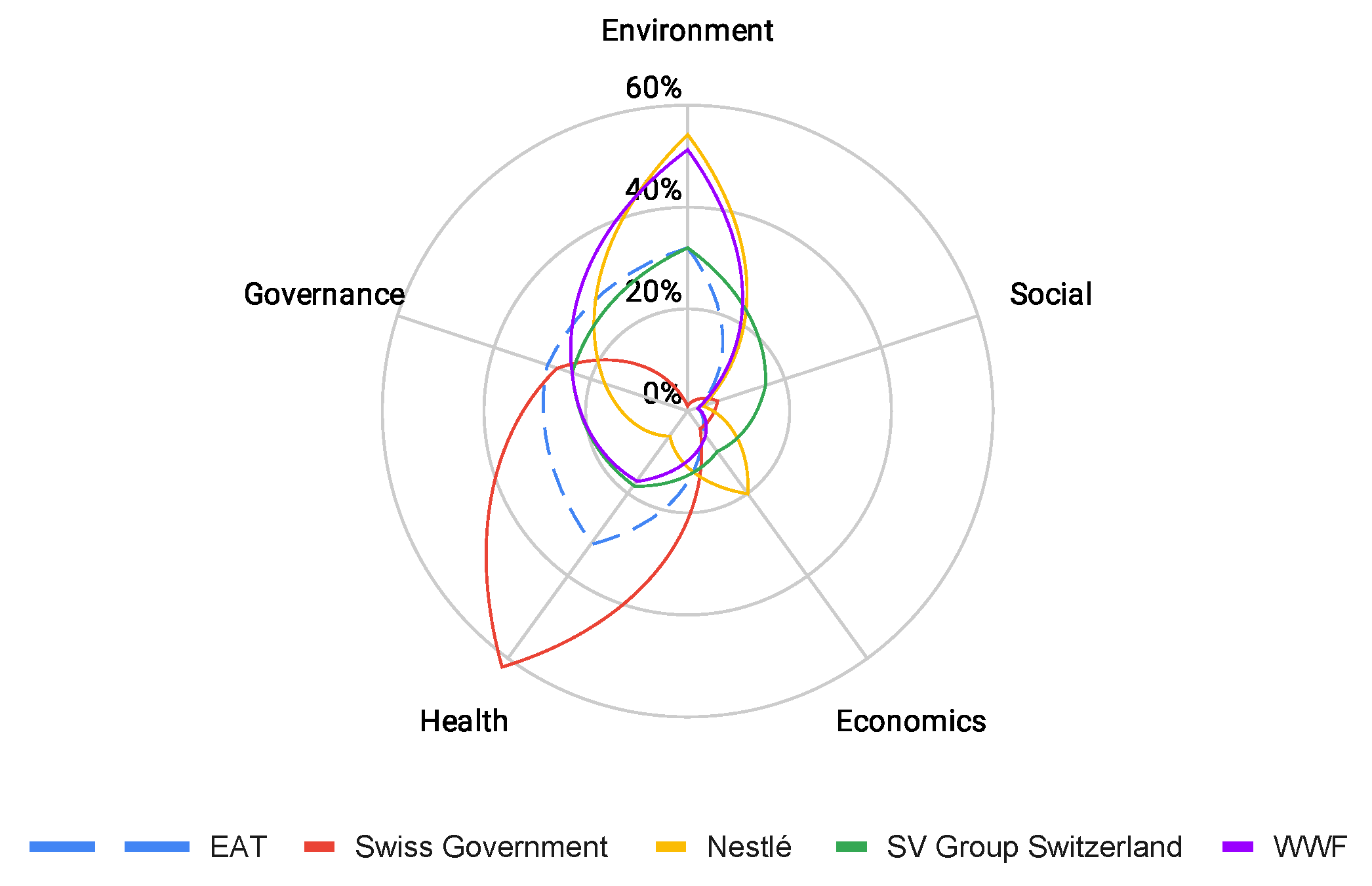
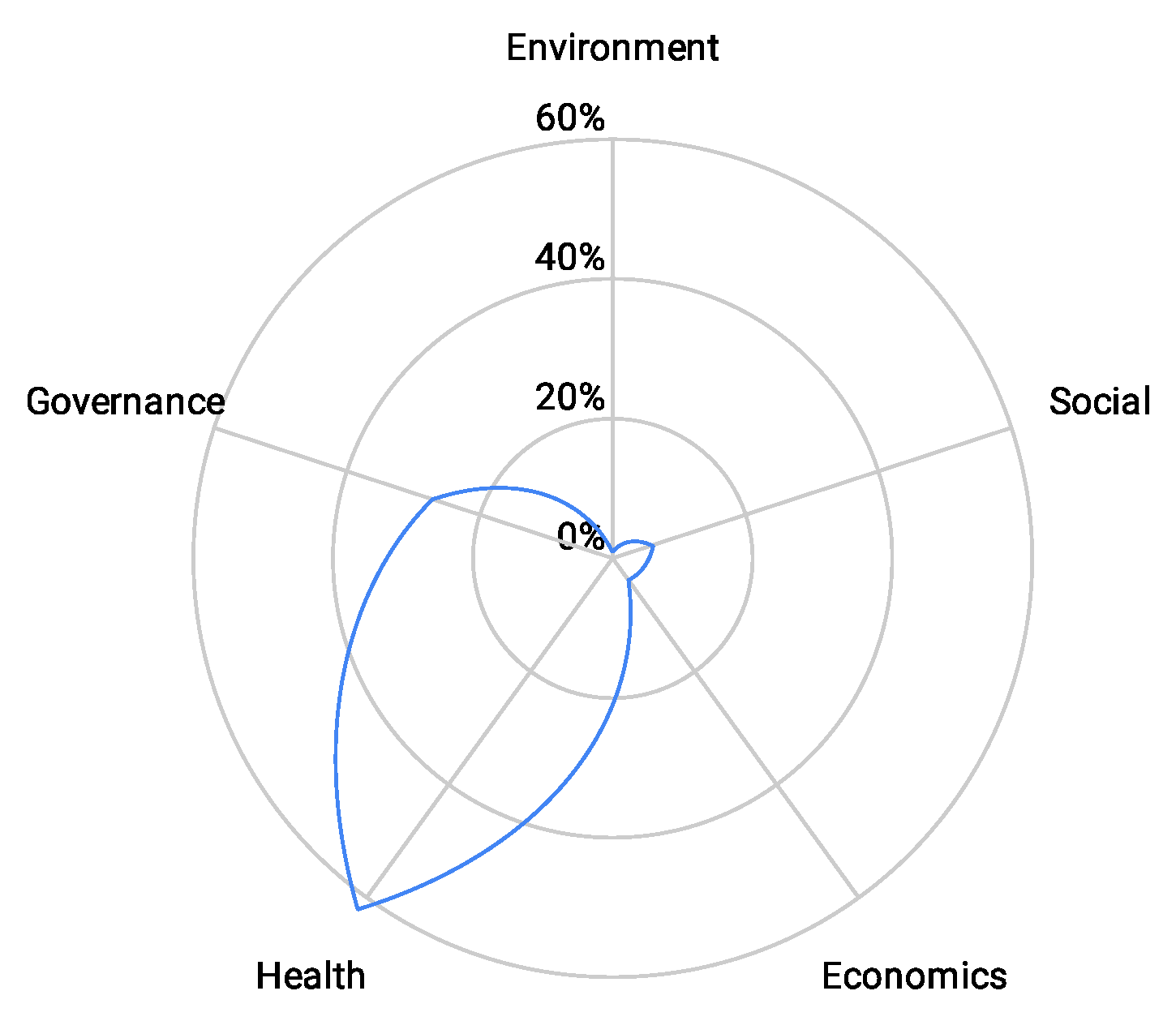
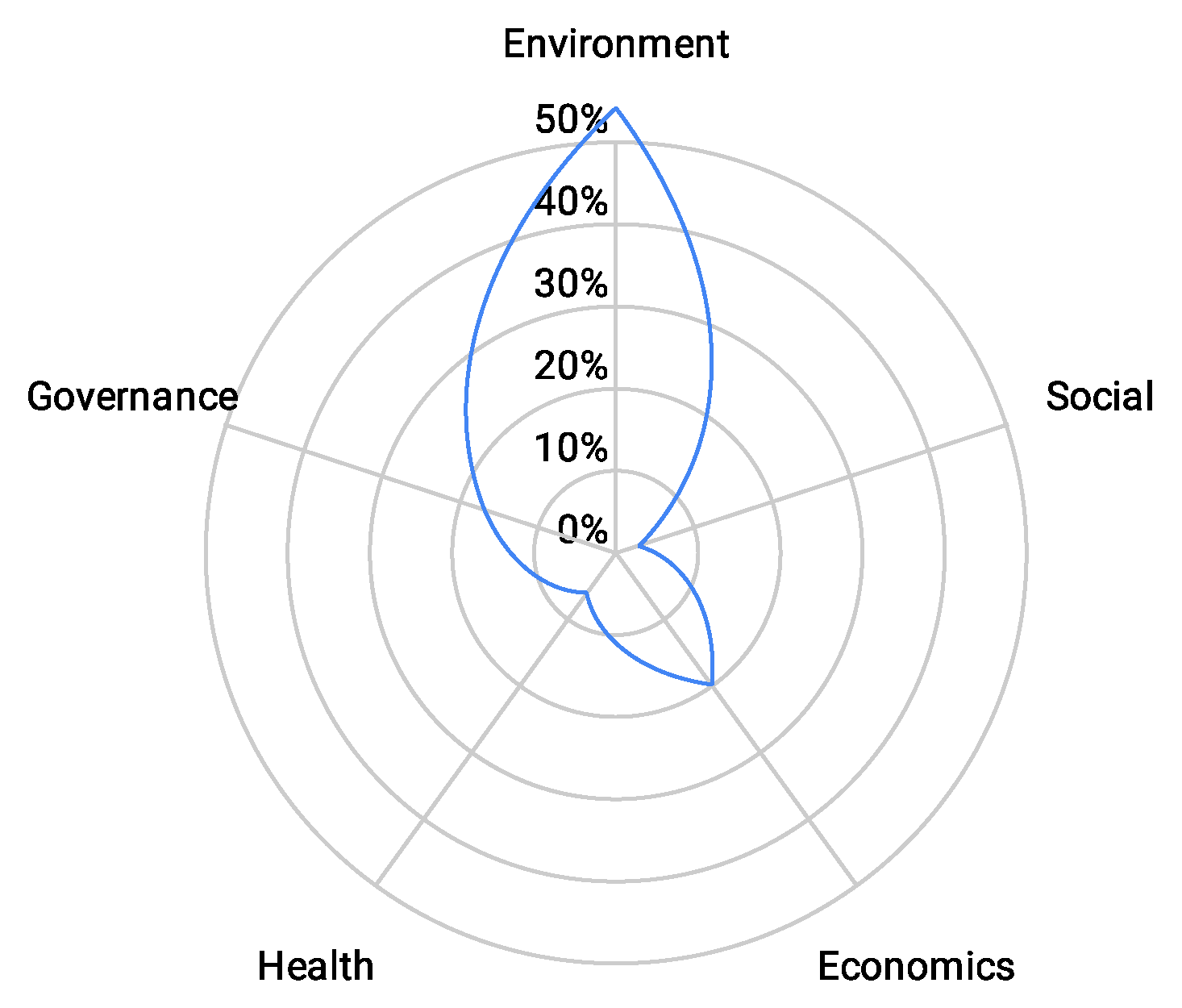
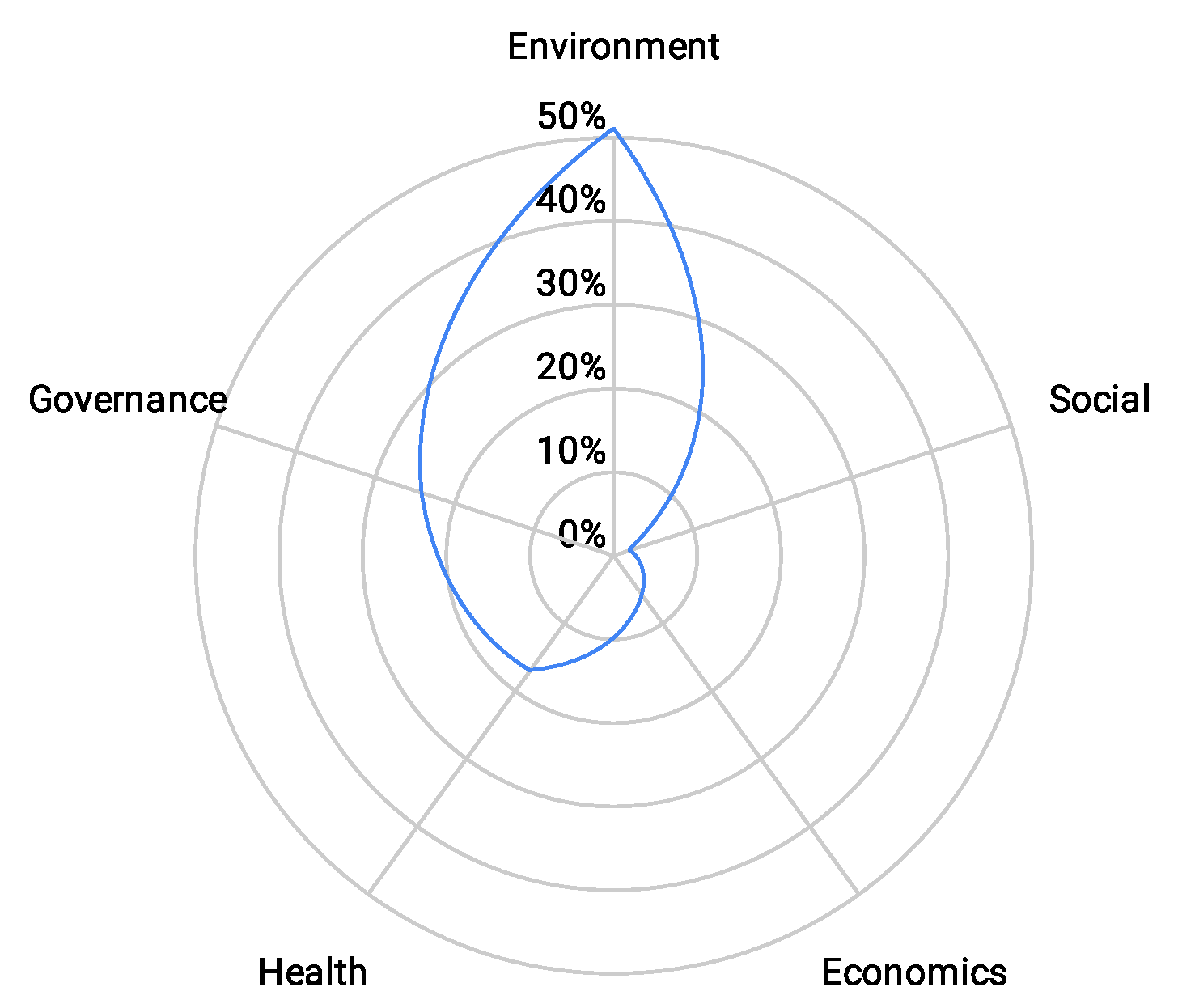

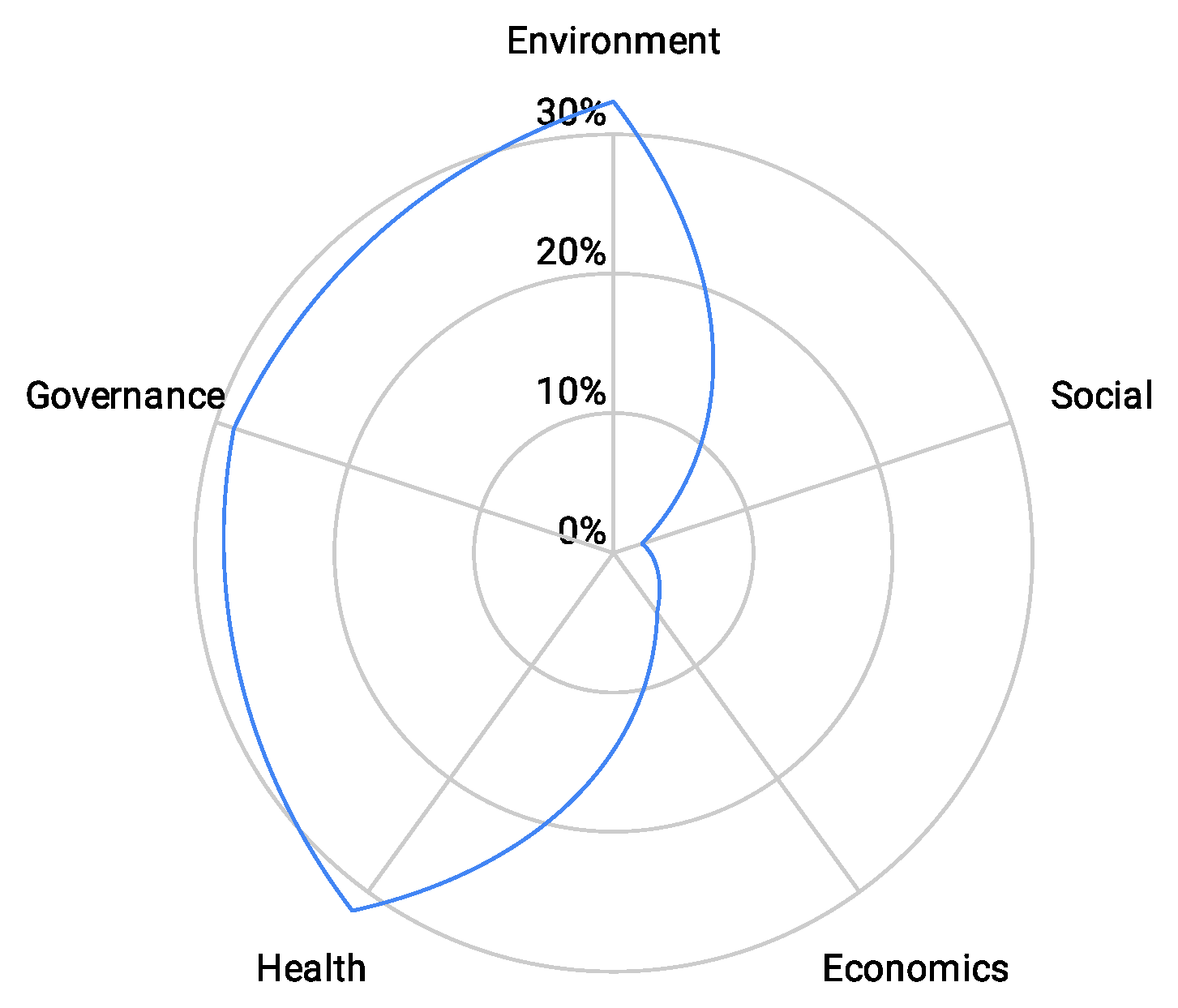
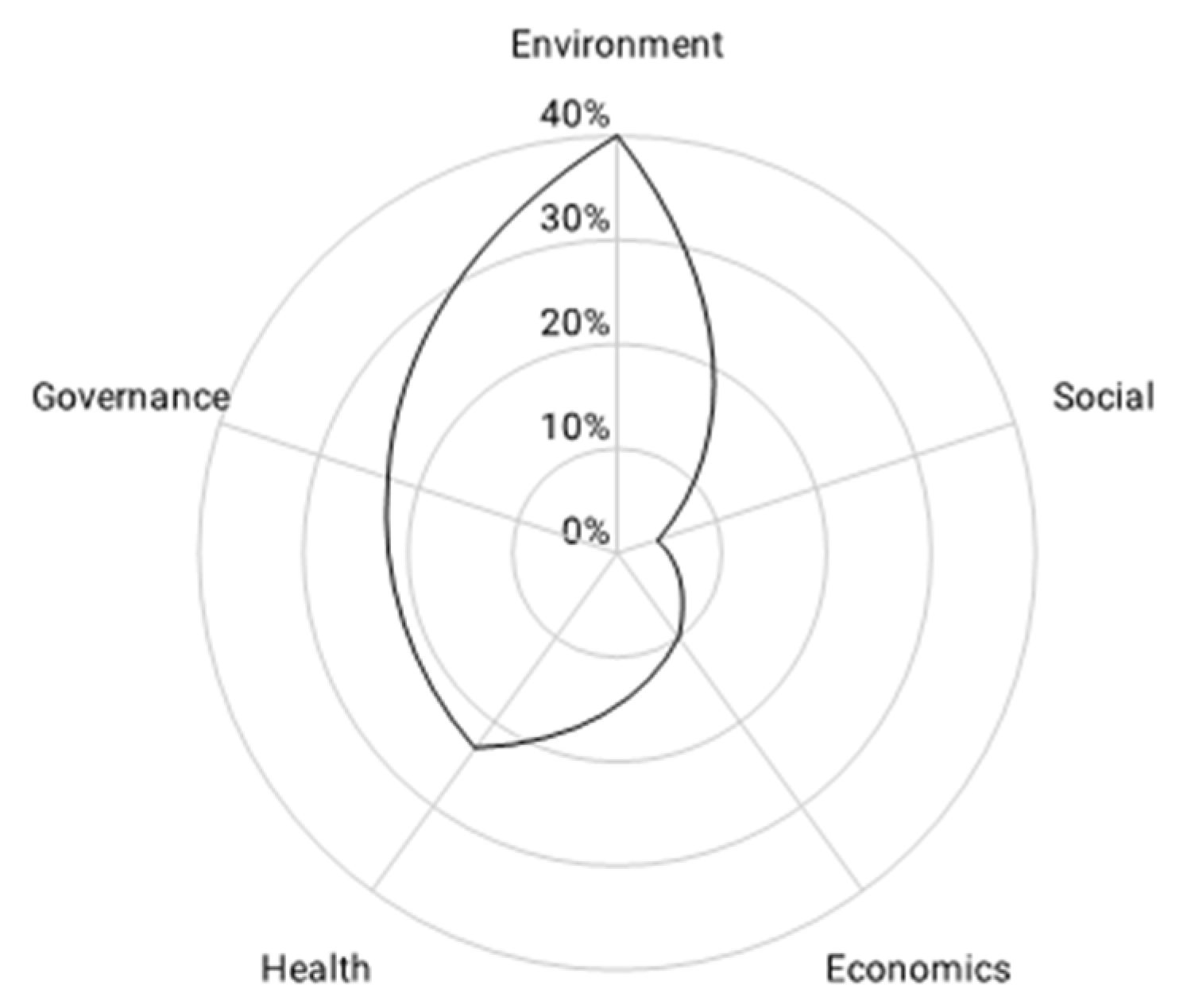
| Stakeholder | Sector | Guideline | Language | Year |
|---|---|---|---|---|
| Swiss Government | Government | Eating well and staying Healthy Swiss Nutrition Policy 2017–2024 | English | 2017 |
| Swiss Food Pyramid | English | 2011 | ||
| Der optimale Teller | German | 2018 | ||
| Nestlé Switzerland/ International | Private Sector (Food Company) | Nestlé’s Net Zero Roadmap | English | 2020 |
| Nestlé in der Schweiz | German | 2019 | ||
| The Balanced Plate–day by day | English | 2017 | ||
| WWF Switzerland/ International | Civil Society | Bending the Curve: The Restorative Power of Planet-Based Diets (WWF International) | English | 2020 |
| Factsheet–Umweltgerechtes Essen–der Erde zuliebe (WWF Schweiz) | German | 2019 | ||
| SV Group Switzerland | Private Sector (Community Catering) | Nachhaltigkeitsbericht (extended online version) | German | 2020 |
| SV Restaurant Kundenbroschüre | German | 2018 | ||
| EAT-Lancet Commission | International Organization | Diets for a better Future: Rebooting and Reimagining Healthy and Sustainable Food Systems in the G20 | English | 2020 |
| Healthy Diets from Sustainable Food Systems–Food Planet Health | English | 2020 |
| Stakeholder | Environment | Social | Economics | Health | Governance |
|---|---|---|---|---|---|
| Swiss Government | Origin (67%): Regional and seasonal food. Food Waste (33%): Avoid food waste. | Pleasure (73%): Enjoyment of eating. Community (13%): Social contact. Ethical Buying (7%): Fair trade products. | Cost (50%): Health care costs related to diet and wellness. Affordability (30%): Affordable food. Technology and Innovation (20%): Promote innovation. | Well-being (18%): Ensure physical and mental well-being. Plant-based Protein (15%): Specific alternatives to animal products are offered. Fruits and Vegetables (13%): Recommended to eat vegetarian several days a week. | Directives (25%): Networking nutritional stakeholders, utilizing synergy and coordinating activities. Education (25%): Strengthen nutrition literacy (put knowledge into practice). Regulation (22%): Political focus on improvement of health and well-being. |
| Nestlé | Climate Change (33%): Reach net-zero by 2050. Land Use (16%): Regenerative agriculture and reforestation. Origin (16%): Source sustainable ingredients, supply chain perspective. | Gender Equality (41%): 30% women in top management positions by 2022. Community (24%): Local farming communities. Animal Welfare (12%): Improving animal welfare. | Sustainable Production Patterns (52%): Cleaner logistics. Technology and Innovation (40%): R&D investments. Cost (5%): Economically viable practices. | Dairy Products (49%): Climate friendly milk pilot project. Sweets, Salty and Alcoholic Drinks (11%): Brief practical guideline on how to eat. Fruits and Vegetables (8%): Brief practical guidelines how to eat. | Certifications and Standards (28%): Accountability towards consumers. Transparency (25%): Transparent to consumers. Regulation (15%): Call for appropriate ground rules from the government side. |
| WWF | Land Use (22%): All action items have direct link to land use. Climate Change (19%): Role of the food system in connection to climate change. Biodiversity (13%): Connection of the food system to biodiversity loss. | Culture (58%): National context needs to be considered. Animal Welfare (33%): Species-appropriate animal husbandry. Ethical Buying (8%): Support of fair trade. | Sustainable Production Patterns (77%): Food production. Technology and Innovation (13%): Technological progress as part of the solution. Cost (5%): Briefly mentioned. | Animal-based Protein (28%): Reduction of animal-based proteins to achieve planet-based diet. Well-being (26%): Planet-based diet benefits human health. Dairy Products (19%): Reduction of dairy products to achieve planet-based diet. | Directives (35%): Translate global recommendations for healthier and more sustainable diets to individual countries. Science (21%): Use scientific basis for decision making. Food Security (19%): Feed humanity on existing cropland. |
| SV Group Switzerland | Origin (40%): Regional and seasonal buying play a significant role. Climate Change (20%): Overarching umbrella in their guidelines (ONE TWO WE Program). Energy Use (9%): Energy saving practices and alternative energy sources. | Animal Welfare (48%): Concrete measures and examples for improving animal welfare (BTS, RAUS). Pleasure (20%): Sustainable produced food needs to taste good and be balanced. Community (14%): Eating brings people together. | Sustainable Production patterns (33%): Resource bundling along the value chain. Technology and Innovation (33%): Process optimization with sound analyses. Labor Rights (15%): Fair trade products and support of labor rights in developing countries are important. | Animal-based Protein (29%): Reduction of meat consumption in order to reduce GHG. Fruits and Vegetables (29%): Increased fruits and vegetables consumption, vegan and vegetarian menus. Dairy Products (17%): Reduction of dairy products. | Certifications and Standards (38%): Labels play a central role. Directives (21%): SDGs as important guidance. Education (14%): Education as essential tool for dietary change. |
| EAT-Lancet Commission | Climate Change (36%): Overarching umbrella for environmental indicators. Food Waste (13%): At least halve food losses and waste. Land Use (12%): Reorient agricultural priorities. | Culture (89%): Critical not to neglect the reality of cultural diversity and regional differences. Animal Welfare (11%): Explicitly mentioned that this issue is foregone in their guidelines. | Sustainable Production Patterns (57%): Intensify food production sustainably, increase high quality output. Technology and Innovation (39%): Fertilizer and water use efficiency, recycling of phosphorus. Affordability (4%): Little specification. | Animal-based Protein (18%): Reduced meat intake to achieve planetary health diet. Well-being (17%): Optimize health within environmental limits. Fruits and Vegetables (16%): Increased fruits and vegetable intake to achieve planetary health diet. | Directives (41%): FBDGs as central element for changing diets and the global food system; SDGs, Paris Agreement. Science (22%): Development of first universal scientific goals for healthy and sustainable diet. Food Security (20%): Planetary health diet as framework to feed nearly ten billion by 2050. |
| Category | Similarities | Differences |
|---|---|---|
| Environment | All stakeholders, except the Swiss government, emphasize the role of food systems in relation to climate change. Climate change stated as target variable, influencing variables are land use, biodiversity and soil to achieve GHG reduction target. Swiss government and SV Group Switzerland place more emphasis on consumer-side recommendations, such as choosing regional and seasonal food. Nestlé and WWF converge around production-related aspects such as land use. | Guidelines aimed at an international or domestic audience differ in terms of food origin aspects. Seasonality and regionality are highlighted by guidelines specific to the Switzerland, supply chain aspects by international guidelines. Environmental aspects are almost absent in Swiss government guidelines. |
| Social | There is little coverage overall. When included, there is a focus on one single feature, rarely touch on several social aspects. With exception of the Swiss government, all the other stakeholders recognize animal welfare as a social issue within their dietary guidelines. | Swiss government and SV Group Switzerland emphasize the pleasure of eating and sharing food. |
| Economics | There is little coverage overall. All stakeholders converge on technological innovation. Focus more on technical production side (e.g., sustainable production patterns, technology and innovation) rather than consumer or worker realities. | Cost and affordability aspects are varied. Either cost or affordability considerations are usually at the forefront, not both simultaneously. Swiss government is the only stakeholder that focuses on economic aspects at the consumer end (health care costs and affordability) while all the others, including EAT-Lancet Commission, focus more on the production side. Private sector (Nestlé and SV Group Switzerland) includes labor rights consistent with certifications and standards. |
| Health | Reduction of animal-based protein, especially meat. Increase fruits and vegetables as well as plant-based protein. | Decisive reasons for reducing the consumption of animal-based protein are health and/or environmental aspects. Food groups are highlighted differently depending on their sphere of influence within the food system. WWF and SV Group Switzerland, similarly to the EAT-Lancet Commission international benchmark, suggest reduction in animal-based proteins. The Swiss government does not suggest reduction but rather present plant-based alternatives. Nestlé makes no mention to reduction of animal-based proteins. |
| Governance | Consistently addressed through all profiles. The governance approach focuses on either directives or regulations. | Food security is raised only by international organization (EAT-Lancet Commission) and civil society (WWF), while neglected by the others. Transparency only recognized by private sector (Nestlé and SV Group Switzerland), link to certifications and standards. Only the Swiss government and the SV Group Switzerland mention education as a tool for dietary change. |
Publisher’s Note: MDPI stays neutral with regard to jurisdictional claims in published maps and institutional affiliations. |
© 2021 by the authors. Licensee MDPI, Basel, Switzerland. This article is an open access article distributed under the terms and conditions of the Creative Commons Attribution (CC BY) license (https://creativecommons.org/licenses/by/4.0/).
Share and Cite
Teschner, R.; Ruppen, J.; Bornemann, B.; Emmenegger, R.; Sánchez, L.A. Mapping Sustainable Diets: A Comparison of Sustainability References in Dietary Guidelines of Swiss Food Governance Actors. Sustainability 2021, 13, 12076. https://doi.org/10.3390/su132112076
Teschner R, Ruppen J, Bornemann B, Emmenegger R, Sánchez LA. Mapping Sustainable Diets: A Comparison of Sustainability References in Dietary Guidelines of Swiss Food Governance Actors. Sustainability. 2021; 13(21):12076. https://doi.org/10.3390/su132112076
Chicago/Turabian StyleTeschner, Ronja, Jessica Ruppen, Basil Bornemann, Rony Emmenegger, and Lucía Aguirre Sánchez. 2021. "Mapping Sustainable Diets: A Comparison of Sustainability References in Dietary Guidelines of Swiss Food Governance Actors" Sustainability 13, no. 21: 12076. https://doi.org/10.3390/su132112076
APA StyleTeschner, R., Ruppen, J., Bornemann, B., Emmenegger, R., & Sánchez, L. A. (2021). Mapping Sustainable Diets: A Comparison of Sustainability References in Dietary Guidelines of Swiss Food Governance Actors. Sustainability, 13(21), 12076. https://doi.org/10.3390/su132112076







